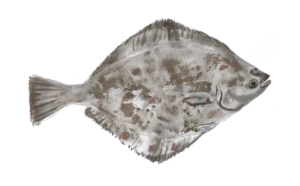Land animals have lungs that help them to take in oxygen from the air and fish have gills to breathe in the air that is found in water. As the fish gulps water into their mouth, this is when the breathing process starts. As the water enters their mouth, it passes through the feathery filaments of the gills but there is more to it than swallowing water and getting the air from it.
How do Fish Gills Work?
After the water passes through the gills, they will absorb the oxygen from the water, and then it moves into their bloodstream. The heart will pump the blood in order to distribute the oxygen throughout the fish’s body. At the same time, the carbon dioxide waste that is in their blood will pass out into the water through their gills. In order to survive, the fish needs to bring in oxygen and get rid of carbon dioxide just like all animals and of course, humans. Everyone just does it a bit different but it is the same process.
To take in water, the fish will raise the floor of their mouth, which is an inward fold of skin that forms a sort of a valve that will not let the water come back out. The pressure is increased and the water is then forced through the operculum opening and across their gills.
What are Gills?
The fish’s gills are branching organs that are located on each side of the fish heads. The gills have many small blood vessels called capillaries. These are what picks up the oxygen when the fish pulls in water. To protect their gills, all bony fish have a bony plate called an operulum that will open and close to help protect them. Their gills have a car-radiator like appearance and most have four gills on each side of their head.
Did you Know?
Did you know that fish are not the only organisms living under the sea that uses gills? Crustaceans and mollusks have gills that operate the same way. Some animals even display their gills outside of their body. One commonly know animal is the sea slugs. The name of these types of animals is called nudibranch. It comes from Greek and Latin words that mean naked gills. One of their distinguishing features is their brightly colored, feathery gills that are exposed on their backs.
General Information
It is hard to breathe underwater and the air that we breathe is an oxygen concentrate of 200,000 parts per million. Water only has a concentration of 4 to 8 parts per million. What this means is that all fish have to run a lot of water over their gills in order to get the amount of oxygen that they need in order to survive. Luckily, the gills of a fish are very efficient in extracting enough of the oxygen that a fish needs to survive.
When oxygen concentration decreases it makes breathing even harder. When there are low levels of oxygen in the water they are referred to as hypoxic zones or dead zones. These zones can happen naturally but they can also be created by humans. For example, farm runoff, which is a type of high-nutrient pollution, enters the ocean and can cause algal that bloom and then dies and decompose. When this happens, it can cause a low-oxygen zone. In 2019, this happened in the Gulf of Mexico when runoff caused massive dead zones.
According to available information, fish from the very earliest species have always had gills. From studies done, it seems that the fish’s gill based respiratory system is massively more efficient than our lungs are. It is so much harder to extract oxygen out of the water than extracting oxygen from the air. The reason is that the oxygen in the water is found in much lesser quantities.
Do all Sea Creatures Have Gills?
No, not all sea creatures have gills. For most fish, survival without water is impossible and they will only stay alive for a few minutes before the lack of oxygen kills them. Fish and sea creatures need water to survive because that is where they get their oxygen. Even though all fish have gills, the exact mechanism of how they work is quite complex. They also vary slightly among the different species of fish.
For aquatic mammals like whales, need air to breathe. They spend most of their life underwater but cannot breathe down there. They have to surface and breathe the air much as a human would. The reason is that they are mammals, have nostrils and lungs, not gills.
Gills Versus Lungs
The gills are somewhat similar to a human’s lungs but there is a main difference. That difference is how they are able to absorb smaller concentrations of oxygen and still allow them to maintain the appropriate level of salt in their body. Humans have in their lungs alveoli that are about 70% capillaries and the gills have small columns and rows of specialized cells called the epithelium. Both work in the same principle; take in oxygenated air/water and pass out the deoxygenated air.
Learn more about fish gills at Ocean Conservancy.
Conclusion
It is important to remember that we need clean oxygen and so do fish. They need clean water in order to breathe so everyone needs to try to do their part by keeping the fish’s ocean habitat free of pollutants. The oxygen that the fish’s gills take from the water not only helps them breathe but it also gives them energy.
A cold-blooded animal tends to have a lower metabolism than a warm-blooded animal so this helps them handle low-oxygen environments. If fish were warm-blooded animals their metabolism would be increased to the point where there would not be enough oxygen for them to survive in a low-oxygen environment.
If you have a fish tank, make sure that you keep it clean to make it easier for them to get the oxygen from the water that they need to survive. Also remember the fish in the rivers, oceans, lakes, etc need clean water also so try not to pollute their water.



